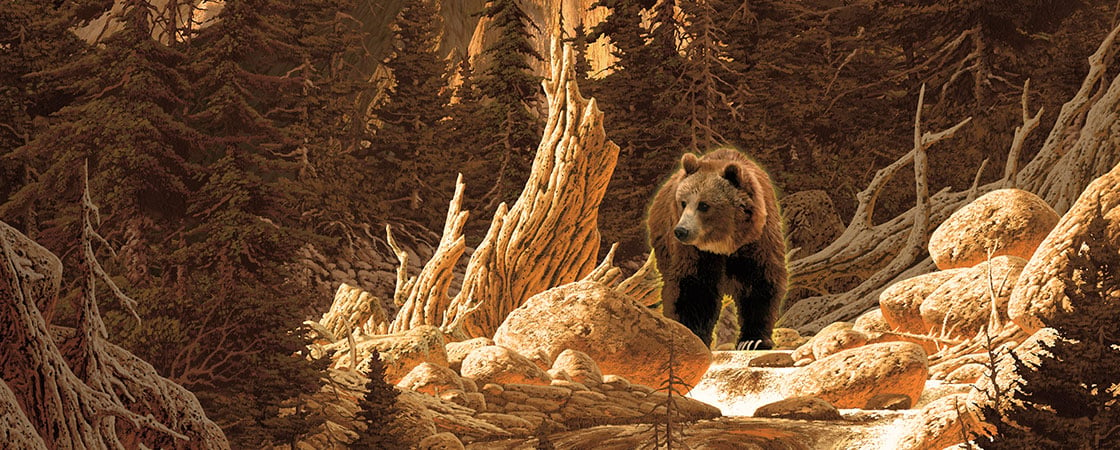It was July 1967. Steve Ashlock and John Cook were enjoying a fishing trip. They were in Montana’s Glacier National Park. The 14-year-old boys hiked up to Trout Lake. It’s one of the glittering lakes set among Glacier’s forests and mountains.
There, the boys spotted a group of bears. At least two were grizzlies. What luck! They are among North America’s biggest and most powerful animals.
Steve and John understood that grizzlies could be dangerous. So the boys kept their distance. But they weren’t scared. Grizzlies usually stayed away from humans. There had never been a deadly grizzly bear attack in Glacier’s 57-year history.
That was about to change. And ideas about grizzlies—and how humans treat them—would never be the same.
It was July 1967. Steve Ashlock and John Cook were on a fishing trip in Glacier National Park. The boys saw a group of bears. At least two of the bears were grizzly bears. Grizzlies are some of the most powerful animals in North America.
Steve and John kept far away from the bears. They knew that grizzlies could be unsafe. But a grizzly bear had never killed anyone in Glacier. So they weren’t scared.They felt lucky to see the bears.
But that was all about to change. Ideas about grizzlies would change too. The way humans treated grizzly bears would never be the same.
It was July 1967. Steve Ashlock and John Cook were on a fishing trip. They were in Montana’s Glacier National Park. The 14-year-old boys hiked up to Trout Lake. It’s one of the lakes next to Glacier’s forests and mountains.
The boys saw a group of bears there. At least two were grizzly bears. What luck! Grizzlies are some of North America’s biggest and strongest animals.
Steve and John knew that grizzlies could be dangerous. So the boys kept far away from the bears. But they weren’t scared. Grizzlies usually stayed away from people. There had never been a deadly grizzly bear attack in Glacier National Park.
That was about to change. And ideas about grizzlies, and how humans should treat them, would never be the same.
It was July 1967. Two 14-year-old boys, Steve Ashlock and John Cook, were enjoying a fishing trip in Montana’s Glacier National Park. They’d arrived the day before, excited for three days of cooking over a campfire and sleeping under the stars.
Glacier had been packed with visitors all summer. But Steve and John quickly escaped the honking cars, crowds of hikers, and trash-covered trails. They hiked several miles up to Trout Lake, one of the glittering lakes set among Glacier’s thick forests and rugged mountains.
The boys’ first day was perfect. They set up their campsite and feasted on the trout they caught in the lake. Best of all: They spotted a group of bears that came to the lake for a drink. Some were the smaller and more common black bears. But at least two were grizzlies. The boys recognized their lighter-colored fur and the hump between their shoulders.
What luck!
Glacier was filled with marvelous creatures. Hawks peered down from trees. Bighorn sheep perched on rocky cliffs. Mountain lions snuck through the trees. But few creatures inspired awe like the grizzly, North America’s biggest and most powerful animal.
Steve and John understood that grizzlies could be dangerous, and the boys kept their distance. But they weren’t frightened. They knew that grizzlies usually stayed away from humans. In Glacier’s 57-year history, there had never been a single deadly grizzly bear attack.
That was about to change.
Terror was just ahead. Two horrific grizzly attacks would soon shatter the peaceful beauty of Glacier National Park. And ideas about grizzlies—and humans—would never be the same.

